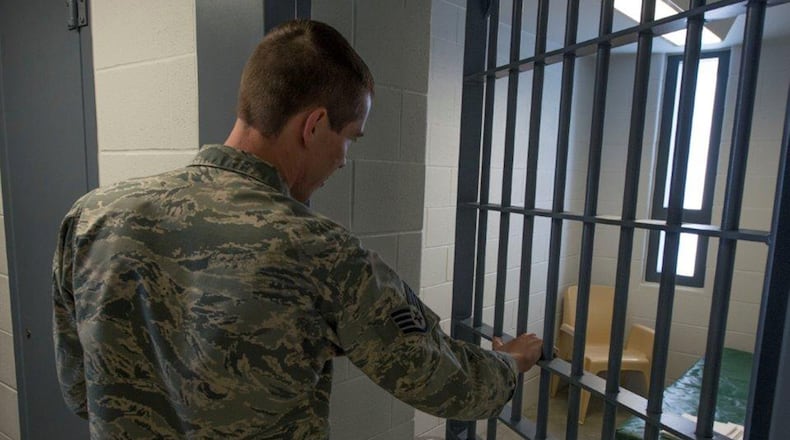“The duty day might be filled with processing paperwork or transporting inmates to appointments around the base,” Scholl said. “Every day is not the same ‘cookie-cutter’ day … one time I was called in at two in the morning because of an emergency with an inmate. We have to always be ready for any situation.”
Wright-Patterson Air Force Base’s confinement facility provides a safe, secure and rehabilitative environment for military members convicted of a court martial or pre-trial detainees who are suspected of a crime punishable under the Uniform Code of Military Justice. If the member is considered a flight risk, their commander can order for them to be confined until the day of the trial.
Inmates are housed up to one year. Afterward, if they are convicted, the length of their sentence would determine if they are sent to a Level 1, 2 or 3 facility. For example, the United States penitentiary Fort Leavenworth is a Level 3 facility.
“Our confinement section here is much smaller in size compared to off-base facilities,” said Scholl. “We can only house one gender at a time. If more than one gender needs to be detained, the other is sent to the Greene County Jail – there they will stay until the other gender here [on base] leaves or gets transferred.”
Scholl explained that confinement is a rehabilitative facility where inmates are sent “as a punishment, not for punishment.” All inmates are treated in a fair, firm and impartial manner.
While in confinement, inmates are able to use military resources and speak to professionals from the Mental Health, Alcohol and Drug Abuse Prevention and Treatment and Chaplains office. They can also take classes, learn how to write resumes and use a computer (without Internet connection) to prepare legal documents.
During regular duty hours an alternate NCO accompanies Scholl in his section, but continued watch of the facility is maintained by the Base Defense Operations Center, on-duty flight leadership and cameras for additional surveillance.
Scholl attended the Navy School of Corrections at Lackland AFB, Texas. There he was taught tactics such as how to interact with inmates, quell situations, forced-cell extractions and self-defense and combative skills.
In a forced-cell extraction, if there is an unruly inmate who does not want to leave his or her cell, Security Forces members would get in a five-man group armed in protective gear and rush into the cell to remove the inmate.
Another guideline he learned is keeping a “reactionary gap,” approximately six to eight feet in distance, when dealing with inmates whenever possible.
He once escorted an inmate to the Naval Consolidated Brig, Miramar. The prison is a Level 2 facility located in San Diego.
Aside from maintaining the facility, Scholl can be tasked for other duties within the Operations section of his flight or get called in any time if problems arise with the inmates.
“It’s something different every time, that’s what I like about my job,” he said.
Scholl has served as the Confinement NCO for one year, which is the normal tenure for the position. He is due to relocate to another section within the Security Forces Squadron.
About the Author
